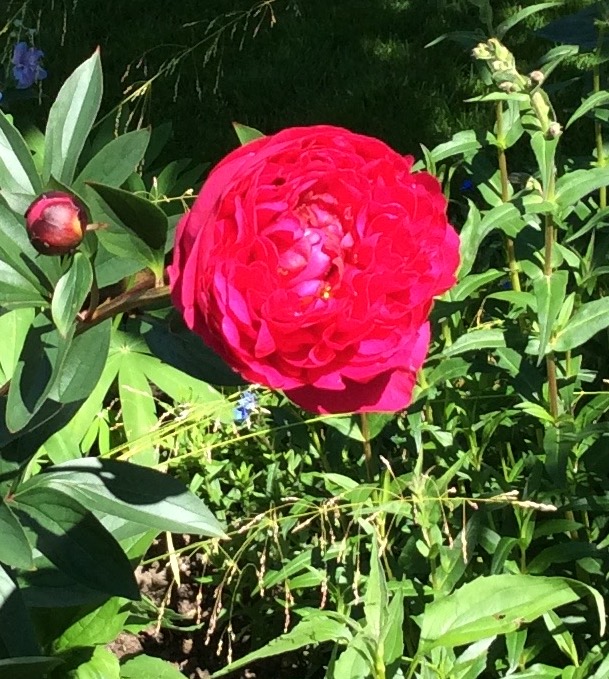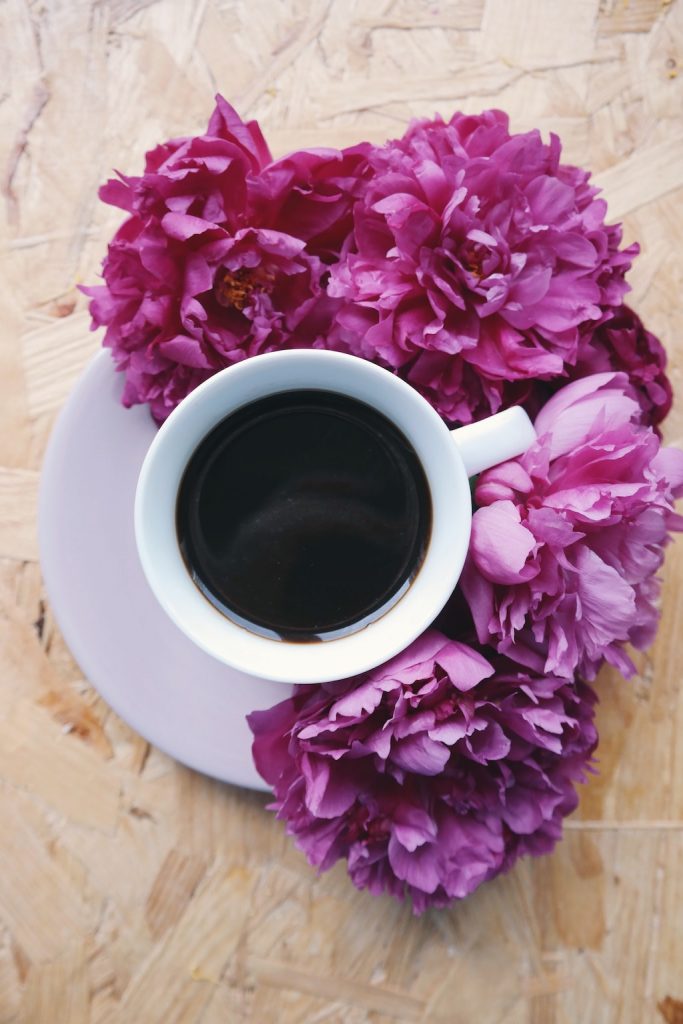It is at this time of the year that peonies come into their full glory. Full blown flowers with voluptuous blooms like glamorous ball gowns or a ballet dancer’s tutu. Layers of delicate petals and a triumph of scent wafting on the early morning air. The tight buds seem to burst forth in an extravagant explosion of flower – delighting in the spring air and eager to show off their charm and glory.

DH Lawrence paints an evocative impression of peonies in his poem A Baby Running Barefoot. Reading it you can almost feel the soft skin of a child’s foot, the tender silken smoothness that can never be recaptured in later life. Very much a flower of the moment the peony flower cannot linger but seems almost heaven sent whilst it lasts.
A Baby Running Barefoot When the bare feet of the baby beat across the grass The little white feet nod like white flowers in the wind, They poise and run like ripples lapping across the water; And the sight of their white play among the grass Is like a little robin’s song, winsome, Or as two white butterflies settle in the cup of one flower For a moment, then away with a flutter of wings. I long for the baby to wander hither to me Like a wind-shadow wandering over the water, So that she can stand on my knee With her little bare feet in my hands, Cool like syringa buds, Firm and silken like pink young peony flowers. DH Lawrence

In Greek mythology Paeon studied under Aesculapius, the god of medicine. However, when Paeon cured Pluto by using a peony root after he had been wounded in a battle with Hercules Aesculapius was enraged and tried to kill Paeon out of jealousy. Pluto saved Paeon by transforming him into the peony flower as he knew that its beauty would be praised and admired. Thus the peony came to represent the quality of compassion.
In another legend, the nymph Paeonia caught the eye of Apollo – he began to flirt with her. Embarrassed, she blushed and turned bright red. Aphrodite, Apollo’s ‘other half’ realised what was going on and, in a fit of rage and jealousy, she turned Paeonia into the red peony we know today. So the peony also stands for bashfulness.

The Chinese, too, tell a story in which a beautiful, but wilful, empress one winters day used her powers of magic to order all the flowers in her garden to bloom. Every flower obeyed, with the exception of the peony. Furious, the empress banished all the peonies in her garden to the coldest and most hostile parts of her empire. But the peony survived, bloomed and produced such a display of wonderful flowers that all were astounded. The empress realised that she had been defeated and allowed the peony to return, naming the plant the ‘Queen of all Flowers.’
The peony was a popular medicinal herb in Europe until the sixteenth century but is seldom used today. The herbalist, Culpepper, recognised two variants, one for treating male complaints and one for female problems. It is also used in Chinese medicine – again with different varieties for different ailments, such as liver and circulation, eczema and ‘cooling the blood.’ None of these should be tried without proper medical advice. However, we can all benefit from the beauty of the plant and its exquisite scent – true balm for the soul.

The peony has been captured in many art- and craft-forms. Embroidery lends itself to some of the most exquisite representations. For a demonstration of this now’s the time to relax, indulge yourself for a few moments and enjoy the following video from Malina GM Embroidery:

